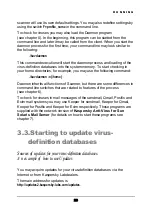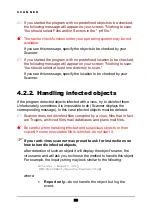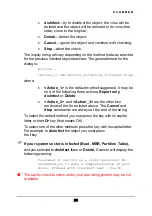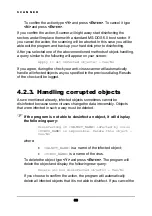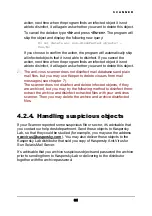
D E F I N I N G S E T T I N G S
To define the location to be checked,
in the
Names
line of the
[Object]
section, enter the filesystem directories
to be checked for viruses. If you define more then one directory, they
must be separated by semicolons. There is one more important thing: if
you specify a directory in this line and want the program to check it for
viruses, make sure to prefix it with the character "
*
". For example, if the
line looks similar to
Names =*/root/vir; .home/samba; */root/tst;
,
its meaning
is: the program when started will check for viruses only in files of the
/root/vir
and
/root/tst
directories
. To exclude a directory from the location to be
checked prefix it with the character "
.
". This feature is very useful since
now you do not have to type or delete directories each time when
including or excluding them from the check. Now you simply prefix
them with "
.
" or "
*
". You may also specify the location by command line
switches (for details see subchapter 4.1).
If you do not have rights to access some of the predefined
directories or files to be checked, they will be skipped during the
check.
To check for viruses in subdirectories of the directories
predefined in the
Names
line,
type
Yes
in the
SubDirectories
line of the
[Object]
section. Otherwise,
type
No
.
The
SubDirectories
parameter corresponds to the command line
switch
-R[-]
. The switch
-R
disables, and the switch
-R-
enables your
anti-virus scanner to search for viruses in files located in the
subdirectories of the directories defined in the
Names
line.
For the program to cross filesystem borders,
type
Yes
in the
CrossFs
line of the
[Object]
section. Otherwise, type
No
.
The
CrossFs
parameter corresponds to the command line switch
-C[-]
. The switch
-C
disables and the switch
-C-
enables your anti-virus
scanner to cross filesystem borders.
37

